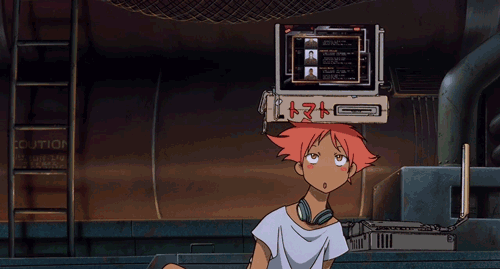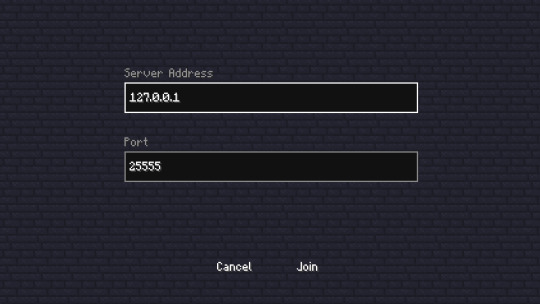#Multiplayer Game Development
Explore tagged Tumblr posts
Text
Pirate Software's "rearchitecture" for Stop Killing Games
There's been a lot of fascinating drama around Stop Killing Games. Go read the initiative here:
It is a good initiative, and anyone who is a consumer that can, should absolutely go support it.
Jason "Thor" Hall, CEO of Pirate Software, recently had a few, let's say, "takes" on the matter (I'm trying and failing to remain neutral), which began on a stream. The stream's VOD has since deleted on his YouTube channel.
Louis Rossmann, who you might know as the largest Right to Repair activist in the US, made a response to a section of the releevant stream here:
youtube
Thor, CEO of Pirate Software, made two videos to clarify his points:
youtube
There is an argument in the video at the 2:08 mark that I will reference later.
youtube
(I recommend watching all these videos on 2x speed. You will get the same info out of them all, because especially video 2 is a lot of repetition)
Now, as mentioned above, there is one particular technical argument that bugs me about what Thor, CEO of Pirate Software, is making. Here is the full quote:
How would you keep League of Legends in a functional, playable state? You'd have to rearchitect the entire game. The game is what is called "client-server". So, in client-server models, there's a server, there's a client, and all of the math, all of the game, everything happens on the server. The client just displays it. And the reason we want to do it that way is so that you can't teleport around and do a billion damage. You don't trust the client. You trust the server. The client just displays what it's told. Right? So, if we wanted to rearchitect this, we would have to take all of that server logic, push it back out into the client, and somehow make that playable in a multiplayer-only video game. That doesn't make sense to me. So this doesn't work for all games. Why is [the initiative] calling out all games?
So, first off, yes, most games do client-server architecture for multiplayer logic, because you do trust the servers. It is an important step to curbing an entire class of cheats. It doesn't necessarily mean the client isn't malicious (for example, there are cheats for League of Legends that show a growing circle when an enemy leaves the fog of war in the minimap). However, it does mean the client doesn't know 100% of the game at any time when information is selectively fed to each client based on something like the fog of war. That's awesome.
Some games, like PlanetSide (rest in peace) and Overwatch (2) use what's called client-side hit detection. Some games, like Halo 1, employ more selective hit detection models, where only certain weapons use client-side hit detection (see https://c20.reclaimers.net/h1/engine/netcode/). Client-side versus server-side hit detection can change the overall feel of a game, and it's one of the things game developers decide on in multiplayer-only games that require it. In the case of an massively multiplayer online first person shooter (MMOFPS) like PlanetSide (2), the server simply can't calculate thousands of people's math in a reasonable amount of time, because otherwise the hit detection would otherwise feel very crappy to play, and so the math is offloaded to the client and the client says "hit" when they hit.
However, there are a few counterexamples to the specific technical argument that keeping the game playable after end-of-lifing it requires rearchitecting:
Games with dedicated servers exist - Command & Conquer: Renegade, Starsiege: TRIBES
Games where one client also hosts the multiplayer server exist - Half Life 2, Warhammer 40k: Space Marine
Private server hosting exists - World of Warcraft
Some of these games, particularly the examples with dedicated servers that can be run on user hardware, can also run as the second example.
To say keeping a multiplayer-only online game requires rearchitecting a game like League of Legends means a lack of imagination. More relevantly, it means a lack of systems thinking.
To me, it is very strange for someone such as Thor, CEO of Pirate Software, who is self-described as being a 20 year veteran of the games industry to say. I won't say skill issue, because I think there is an ulterior motive at play.
Just to hammer the point home, I drew up some crappy diagrams in Inkscape because this extremely wrong technical argument bugged me so, so much.
Here is what a client-server model looks like:

Here, you have 10 clients, each being a player of the game. Then, you have the server, run by Riot, the developer and maintainer of League of Legends.
Here is the imagination of Thor, CEO of Pirate Software, had to say on the matter on the required way rearchitect it:

Those who know their network models would understand this looks very much like a mesh network, or a peer-to-peer model. And, to be fair, some games might attempt it.
However, this isn't *usually* how games described using a peer-to-peer (P2P) model work. Most peer-to-peer models, like the architecture used in Space Marines, are often used for matchmaking. Once you are in a game, one of the clients also serves as the host (selecting by some algorithm, like randomly or whoever has the best hardware).
P2P is nice, because the company doesn't have to run servers for matchmaking at all during their lifespan (and sometimes a matchmaking server might be spun up to serve as a relay to help with network issues or help other clients find clients quickly). As we'll get into later, a client machine will also serve as the host machine. It is a perfectly fair and valid, although it comes with it's frustrations (mainly in the realm of network address translation (NAT) traversal, because your computer behind a router is not usually exposed to the wider Internet, though sometimes routers have universal plug-and-play (UPnP) set up, which makes NAT traversal much easier here).
If you've ever seen a message in the game "migrating host" because the host left, they likely use P2P matchmaking, but still use a client-server model. They can just migrate the game data to a new host using the data on the other clients as a seed for the data.
This is likely their setup for actual gameplay:

One of the clients now has a server on the same machine. Sometimes, this could be the game itself that would serve in singleplayer. However, most often, this is just a server that's lightweight enough for the client to connect to and they play that way (it's also really nice to develop and QA this way, because many server bugs will also be seen by the client).
Now, one of the disadvantages here is: Can all remote clients connect to the host that the server (and one of the clients) is running on? Again, NAT traversal issues usually play a role here. In the first few days of any game that uses this, and only this, there will likely be a lot of issues with connectivity.
Another disadvantage: The host won't have latency issues. This is why in the case of, for example, Among Us, the client host can see certain things happening (like someone is dead the moment they hit a button or reported a body), but remote player hosts might not.
Okay, so, maybe it's not possible to rearchitect something like League of Legends like this. It could reasonably be a lot of work. Here is another solution:

Looks very similar to the first architecture, doesn't it? It is! The difference is that the text "Riot" was changed to "not Riot".
This is how World of Warcraft and Pokemon Go private servers work.
The vast majority of games that would not run without private servers simply do not require rearchitecting to keep in a reasonably playable state when the servers shut down.
#stop killing games#pirate software#software architecture#software development#multiplayer game development#Networking#League of Legends#Among Us#PlanetSide#Starsiege: TRIBES#TRIBES#Half life 2#World of Warcraft#Pokemon Go#Warhammer 40k: space marine#command & conquer: renegade#Youtube
8 notes
·
View notes
Note
what should one focus on, mechanics-wise, so that in the end players will enjoy losing?
There are several approaches and techniques I can think of that will help mitigate the sting of losing.

Losing players should still get rewarded. Battle Royale games have only one ultimate winner, but they hand out rewards to all participants. Those who survive longer get better rewards, even if they don't win. Many games have achievements and secondary goals that grant rewards even if you don't win the match.

Losing will always sting, but we don't have to let it fester. We can, instead, offer the loser a quick exit and an option to get into a new game quickly. Most battle royale games offer the ability to spectate or start queueing for a new game immediately upon game loss.

Losing can be an opportunity to learn and improve. Not a lot of games do this, but I really like how fighting games have replays of your matches where you can go back and see the inputs and the events that transpired. Several of them even have instantaneous takeover, where the player can let the replay go until they start inputting new commands and see what would have happened if they had done something different.

Losing feels less bad if there are things built into the game that can share/take the blame. Think about how many players in MOBA games like League and DotA complain about their teammates, rather than look inward for reasons they lose. Similarly, randomized elements like not drawing enough (or too many) lands in Magic: the Gathering can give players a convenient "release valve" for their frustration and let them continue playing without needing to harm their own egos.

I think that it's important to recognize that the importance of victory is mostly determined by the stakes involved in the game. If we reward players primarily for victory, then winning will feel better and losing will feel worse. If you don't grant heavy rewards for victory, then the losing doesn't feel worse and the winning won't feel as good. Still, through judicious reward placement and some vents for frustration, we can make mitigate the worst of the sting of losing for most players.
[Join us on Discord] and/or [Support us on Patreon]
Got a burning question you want answered?
Short questions: Ask a Game Dev on Twitter
Long questions: Ask a Game Dev on Tumblr
Frequent Questions: The FAQ
#multiplayer game development#winning and losing#game feature breakdown#multiplayer game features#player mentality#experience crafting
32 notes
·
View notes
Text
Creating Immersive Gaming Experiences with Unity 3D

Unity 3D is one of the most powerful and user-friendly game development platforms available today. Whether you’re a beginner or an experienced developer, Unity provides everything you need to create immersive games for all platforms.
For more information, visit: https://masglobalservices.com/services/game-analytics/
#AR VR Game Development Services#Metaverse Game Development#Blockchain Game Development Company#Cross-platform Game Development#Multiplayer Game Development#AI Game Development Company
0 notes
Text
Contact us for Mobile game development
#shooting game#multiplayer game development#mobile game development#game developers#game development#game design#gamedev#game dev blog#video games
0 notes
Text
A Comprehensive Guide to Unity 3D Game Development for Beginners
Look no further! In this comprehensive guide, we will walk you through the basics of Unity 3D game development, starting from scratch. By the end of this article, you will have a solid understanding of the fundamentals and be ready to start creating your own games.
0 notes
Text
Top Trends in Metaverse Game Development for 2024
In the fast-evolving world of technology, the concept of the metaverse has been gaining traction in recent years. With the rise of virtual and augmented reality, the metaverse has become a hot topic in the gaming industry. As we look ahead to 2024, it is essential for game development companies like Abhiwan Technology to stay ahead of the curve and keep up with the latest trends in metaverse game development.
#Metaverse game development company in Delhi#Abhiwan technology#Game development company#Multiplayer game development#unreal game development
0 notes
Text
AR/VR companies in India
In this article, we will delve into the world of augmented and virtual reality technology in India, highlighting the leading companies making waves in this rapidly evolving industry.
#ar/vr companies in India#abhiwan technology#game development company#multiplayer game development#2d game development#3D game development
0 notes
Text
I find kernel level anti-cheats and generally client-side anticheats like BattleEye, EasyAntiCheat, and Vanguard really stupid, because they really aren't stopping cheaters, all they're doing is discouraging them while sacrificing performance, user privacy, Linux support, and generally risking accidentally banning casual user.
I started developing my own anti-cheat for a game and it hit me, you should never have any anti-cheat on the client. All anti-cheats should be server-side, because to this day players are still figuring out ways to bypass these anti-cheats, like using hardware-level exploits which are physically impossible to detect unless they start serving anti-cheats as AI-powered robots that are physically in your room looking at you while you game.
Think about it.. Wall hacks let you see other players through walls, easy solution right? Just don't tell the client where the other players are, do server-side calculations for occlusion, you already have a system for it to do it client-side since it saves performance not to render players that aren't on the screen. But nope, because it would slightly increase server costs, even if it makes cheating impossible to perform.
The number one rule in multiplayer is "NEVER TRUST THE CLIENT UNDER ANY CIRCUMSTANCE", and these huge game dev corporations are consistently not following it, then complain about having cheaters while going "Oh, it must be the Linux users!!! Not our flawed approach at anti-cheat!!!"
56 notes
·
View notes
Text
our multiplayer game about building island towns for little vegetable folks was announced during wholesome direct last night 🍆
it's called 'gourdlets together', and is a sequel to 'gourdlets' from auntygames (she is a real life NASA scientist!!)
🏝️ craft your island 🎣 level up your fishing 💖 invite friends to hang out 🍆 gourd vibes only more info store.steampowered.com/app/3661400/Gourdlets_Together/
#indiegames#indie games#indiedev#indie dev#indie game#indiegamedev#game development#gamedev#wholesome games#wholesome#games#idle games#idle#fish#cozy vibes#cozy games#cozy gaming community#fishing game#multiplayer#steam games#cosy#cosy games#cosy aesthetic#eggplant
23 notes
·
View notes
Note
gamedevs, what is harder ?
coding an online multiplayer for the first time ?
learning 3D ?
Sorry about forgetting about this. For months. Whoops.
#polls#tumblr polls#poll#tumblr poll#general polls#video games#online games#online multiplayer#game development#game developers#coding#video game art
7 notes
·
View notes
Text
How to Balance PvE and PvP in MMORPGs
Creating a successful MMORPG requires careful attention to one of the most challenging aspects of MMORPG game development: balancing Player versus Environment (PvE) and Player versus Player (PvP) content. When these two gameplay pillars are properly balanced, they create a rich, dynamic world that keeps players engaged for years. When they're not, your game can quickly lose its player base.

Why Balance Matters in MMORPG Game Development
MMORPGs thrive on diverse player preferences. Some players love raiding dungeons and defeating epic bosses, while others crave the thrill of outmaneuvering human opponents. The most successful MMORPGs don't force players to choose—they create ecosystems where both playstyles can coexist and complement each other.
As experienced developers know, imbalance can lead to serious problems:
Player exodus when one type of content receives preferential treatment
"Dead" game areas when certain content lacks meaningful rewards
Community division between PvE and PvP players
Power imbalances that make content trivial or frustratingly difficult
Core Principles for Balancing PvE and PvP
1. Separate Skill Systems When Necessary
One fundamental approach in MMORPG game development is implementing different rules for skills in PvE versus PvP contexts. Many abilities that work well against predictable AI enemies can become overwhelming when used against other players.
Consider World of Warcraft's approach: many crowd control abilities have different durations when used against players compared to monsters. This simple adjustment prevents PvP matches from becoming frustrating stun-lock festivals while still allowing those abilities to remain useful in dungeons.
2. Create Meaningful Progression Paths for Both
Players need to feel their preferred gameplay style offers legitimate advancement. A common pitfall in MMORPG game development is making the best gear exclusive to one content type.
Guild Wars 2 solves this elegantly by offering multiple paths to equivalent gear. Whether you're exploring story content, raiding, or competing in structured PvP, you're making meaningful progress toward your character's growth.
3. Design Complementary Reward Structures
Smart reward structures encourage players to engage with both content types without forcing them into gameplay they don't enjoy.
Final Fantasy XIV implements this brilliantly:
PvP offers unique cosmetic rewards and titles that don't affect PvE power
PvE progression rewards that remain relevant to casual PvPers
Seasonal PvP rewards that maintain engagement without creating power imbalances
4. Consider Scaling Systems
Scaling systems are increasingly common in modern MMORPG game development, allowing characters of different power levels to compete on more even terms.
Elder Scrolls Online's battle scaling system normalizes stats in PvP areas, ensuring that gear differences matter but don't make fights impossible. This approach lets newer players participate while still rewarding veterans' progression.
Technical Implementation Challenges
Skill Effect Modifiers
Implementing separate modifiers for skills across different content types creates additional complexity. Your system architecture needs to support contextual rule changes that can dynamically adjust how abilities function based on whether they're being used in PvE or PvP scenarios.
For example, a stun ability might last 5 seconds against a dungeon boss but only 2 seconds against another player. These contextual adjustments help maintain balance without creating separate ability sets.
Data-Driven Balance
Successful MMORPG game development requires continual refinement based on player behavior data. Implement robust telemetry systems to track:
Win rates in different PvP brackets
Completion times for PvE content
Class/build representation across content types
Economic impacts of different activities
This data forms the foundation for informed balance decisions rather than relying solely on player feedback, which often skews toward the most vocal community members.
Case Studies: Learning From Success and Failure
Guild Wars 2: Structured PvP Success
ArenaNet's approach to structured PvP in Guild Wars 2 represents one of the most elegant solutions in MMORPG game development. By completely separating PvP builds and gear from PvE progression, they created a truly skill-based PvP environment while allowing their PvE systems to scale naturally.
World of Warcraft: The PvP Power Experiment
Blizzard's introduction of PvP Power and PvP Resilience stats was an attempt to solve balance issues by creating separate gear progressions. While theoretically sound, this approach created problems:
Players needed separate gear sets for different content
PvE players felt forced into PvP to remain competitive
The system added complexity without solving core balance issues
The eventual removal of these stats and return to unified gear with contextual modifiers proves that simpler solutions are often better in MMORPG game development.
Integration Strategies That Work
Territorial Control With Benefits
Territorial PvP becomes more compelling when it offers benefits that extend to PvE gameplay. Black Desert Online uses this approach effectively, with guild warfare providing economic advantages that benefit both PvP-focused players and their more PvE-oriented guildmates.
Optional Flag Systems
Many successful MMORPGs implement flag systems allowing players to opt in or out of open-world PvP. This creates natural tension and excitement without forcing unwilling participants into combat situations they don't enjoy.
New World's territory control system exemplifies this approach, making PvP meaningful while keeping it optional for those who prefer PvE content.
Common Pitfalls to Avoid
In MMORPG game development, certain design decisions consistently lead to balance problems:
Making the best PvE gear require PvP participation (or vice versa)
Balancing classes primarily around one content type
Allowing gear advantages to completely overshadow skill in PvP
Creating "mandatory" grinds across content types
Neglecting one content type in major updates
Finding the Sweet Spot: Blending Content Types
The most successful MMORPGs find creative ways to blend PvE and PvP content:
ESO's Cyrodiil combines large-scale PvP with PvE objectives
FFXIV's Frontlines mixes competitive objectives with NPC enemies
Guild Wars 2's World vs. World incorporates PvE elements into massive realm warfare
These hybrid approaches satisfy both player types while encouraging interaction between different playstyles.
Conclusion
Successful MMORPG game development requires treating PvE and PvP balance as equally important, interconnected systems. By implementing contextual modifiers, separate progression paths, and data-driven balancing, you can create a game world where diverse player preferences are respected and rewarded.
Remember that perfect balance is never achieved—it's an ongoing process that requires constant attention and adjustment based on player behavior and feedback. The most successful MMORPGs view balance as a journey rather than a destination, with each update bringing the game closer to that elusive equilibrium that keeps all types of players engaged and satisfied.
By focusing on systems that allow both playstyles to thrive without undermining each other, you'll create an MMORPG that stands the test of time and builds a loyal, diverse community.
#game#mobile game development#multiplayer games#metaverse#nft#vr games#blockchain#gaming#unity game development
5 notes
·
View notes
Text
Monster Rancher Battle Card: LackeyCCG Plugin
LackeyCCG is 100% Free - It runs entirely on donations, much like LegendCup - and the MRBC Mod for it is also free. Another benefit of LackeyCCG over TTS, is that it is portable, and requires very little resources so even a potato computer can run it.
https://legendcup.com/mrbc-lackeyccg-plugin.php
This update replaces a 10+ year old legacy plugin with the revised images, new translations, additional board/player features, support for transparencies (rounded corners, tokens etc.).
The rules of the physical card game are identical to the PS1 game but includes additional cards never released in the west!
#monster rancher#simulation#ccg#LackeyCCG#card games#card game development#multiplayer#MRBC#MRBC:EPII
8 notes
·
View notes
Text
Do you like video games?
Do you like science?
Do you like sarcasm?
Do you like causing chaos with your friends and running around in a paranormal science containment facility and optionally beating up small creatures?
Well, after years of work my father's company's game is coming to early access on steam.
"It’s set in a sprawling research facility that has been overrun by paranormal threats. As Earth’s greatest scientists you must band together, craft ingenious tools and weapons, and survive the only way you know how: Kill 'em with science!"
Abiotic factor is an online co-operative survival crafting game, but if you have no friends or simply prefer your cats company, fear not because it can be played solo.
If you feel like supporting an indie game company from New Zealand and introducing an awesome game to your life then get it tomorrow.
(Also I helped with the writing in a couple tiny places so if I get enough people to play it I may be able to leverage some more credit.)
Anyway, play it. It's great. here's some links:
youtube
#Indie game#Abiotic factor#Game#Video games#video gaming#steam#multiplayer#sci fi#Sci fi games#indie developer#indie games#indiegamedev#funny#Youtube
24 notes
·
View notes
Text
✨ It’s a thrilling time in the world of Monster Hunter! 💥 As we celebrate 20 years of epic monster-slaying adventures, we reflect on how this beloved series has evolved over the years—from its humble beginnings on the PS2 to the highly anticipated Monster Hunter Wilds releasing on February 28, 2025!
Ready to join the hunt? Read more about the journey of Monster Hunter in our latest blog post!
#Monster Hunter#Monster Hunter 20th Anniversary#Epic Hunts#Monster Hunter Evolution#Gaming History#Video Game Anniversary#Monster Hunting#Monster Hunter Wilds#MH Wilds#PlayStation#PS2 Games#PS4 Games#PSP#Gaming Community#Coop Gaming#Multiplayer Games#Game Development#Open World Games#Adventure Games#Monster Hunter World#Monster Hunter Rise#MH Rise#Retro Gaming#Adventure Gaming#Console Gaming#Gamer Life#Video Game Culture#Fantasy Games#Action Role Playing#Hunters Unite
5 notes
·
View notes
Text
The Future of Gaming: Insights from a Leading VR Development Company in Delhi
As the demand for VR games continues to rise, game development companies are racing to stay ahead of the curve by harnessing the latest technologies and innovations. One such company leading the charge is Abhiwan Technology, a premier VR development company based in Delhi.
#VR game development company in Delhi#Abhiwan Technology#multiplayer game development#top game development company in delhi
0 notes
Text
Teaser!

I got a basic TCP server running able to withstand ~10/20 players with ease. This is how the multiplayer connect screen is going to look like!
#game development#programming#lwjgl#opengl#indie#game#taplixic#youtube#libgdx#survival#multiplayer#tcp#network
2 notes
·
View notes